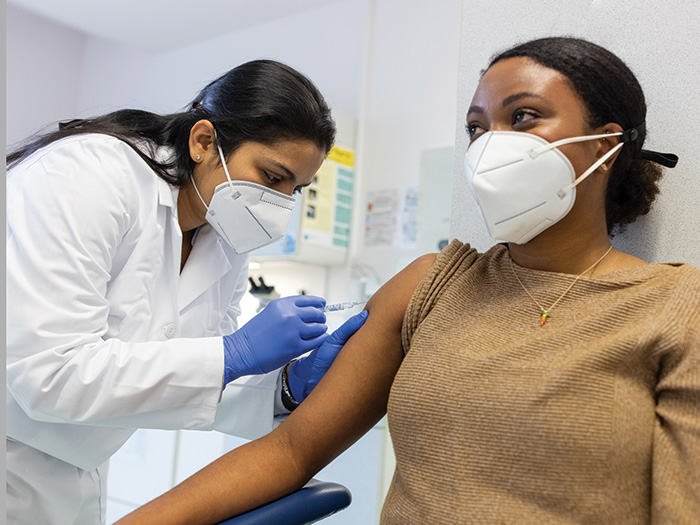Mandatory vs. Voluntary Vaccination: What Employers Need to Know About the Daunting Path Ahead

News broke on September 9th that President Biden’s administration will implement a new sweeping vaccine mandate applicable to private employers with more than 100 employees, detailed in the President’s COVID-19 action plan.
The new rules, issued by OSHA via an Emergency Temporary Standard, are expected to affect more than 100 million Americans and closely follow the Biden administration’s vaccine mandate for federal employees and contractors.
Under these rules, employers with more than 100 employees must mandate vaccination amongst their workforce or implement a weekly testing program.
“We’ve been patient. But our patience is wearing thin, and your refusal has cost all of us,” Biden said in his announcement. Legal challenges are expected to the new rules, however, for most employers, the confusion is setting in now, especially as it relates to exemptions.
“From a mandate standpoint, we have a lot of voices and pundits, but at the end of the day we do have some things that are certainties,” said Carrie Cherveny, senior vice president, Strategic Client Solutions and Compliance at HUB International.
“We know that the American with Disabilities Act exists and is federal law. We know that Title VII [of the Civil Rights Act of 1964] about religious discrimination exists and is federal law. We know that medical conditions that are not necessarily disabilities but that would prevent someone from getting vaccinated, like someone with an allergy to the vaccine, exist and are important.”
A Roadmap for Private Employers
Private employers have an obligation to protect employees from COVID-19 in the workplace, but they must also navigate the difficulties associated with exemptions and ensuring that legitimate documentation is provided for the vaccinated. Above all, according to Cherveny, communication is key.
“The success or failure of any kind of mandate program — whether government required or employer required – is going to rise or fall on employees’ ability to raise their hand, ask for help, and work with management to find what works for them,” Cherveny explained.

Carrie Cherveny, senior vice president, Strategic Client Solutions and Compliance, HUB International
“Everyone has to go into this with an open mind — we can’t assume employees are trying to game the system, although certainly there is that element out there — but we have to give employees the benefit of the doubt and have open and honest conversations with them about their limitations.”
Regarding the benefit of the doubt, Cherveny noted that the EEOC has been clear in its guidance to employers on the issue. A question and answer sheet from the EEOC clarifies this further, and also features anti-harassment policy tips for small businesses.
To manage the new rules, additional tools are available.
“We got started in February/March of last year when the pandemic first hit our shores. My co-founder and I felt like we needed to do something. We wanted to use our smartphones to do contact tracing during the early days of the pandemic,” said Jikku Venkat, CEO of ReturnSafe, a company that created a software to help employers manage infectious disease outbreaks.
Venkat’s efforts led to an easy to use app that can help employers meet the new mandate by collecting the results and documentation. He sees the new mandate as an extension of what he calls “the two lane approach.”
“There’s a lane for vaccinated folks and what that protocol is to keep them safe, and then there’s the lane for the unvaccinated. A lot of our customers are making reasonable accommodations for unvaccinated people,” he said.
“First, they need to understand why they are unvaccinated — for religious or medical reasons. Some employers use an honor system or others want to see some evidence. It’s ‘trust but verify’ in both of these lanes, as in proof of vaccination. The second part of that second lane is a testing program in place. They need to be tested on some cadence and they need to provide the results.”
In collecting both the documentation and test results (from those that cannot or refuse to be vaccinated), there are potential landmines.
“I never thought I’d say the following sentence, but the ADA component is a little bit easier,” Cherveny said. She gave the example of a client that sent over an employee’s request form for an accommodation under religion for review. She found that language in the form nearly exactly matched copy from a website advising readers as to what to include to get a religious exemption from their employer.
“So that called into question the sincerity of this religious belief and led to a conversation where the employee just admitted that they don’t believe in vaccines. The employer said that they appreciated the honesty, but that that isn’t protected under the law,” Cherveny said. She went on to explain that when open avenues of communication are provided, this is the likely result.
The Impact of a Vaccine Mandate
Aside from legal challenges to the vaccine mandate, fallout from the private sector could be severe.
“We are in an incredible labor shortage, if the emergency temporary standard goes through at the 100 or more employee level, there are plenty of employers out there that employ less than 100 workers, so the under-100 employers that don’t otherwise have vaccine mandates may find themselves with a plethora of talent at their front door,” Cherveny said.
That is, if they’ll take unvaccinated workers. Nearly 60% of small businesses said they would require vaccination for employees moving forward and another 23% said that they were considering it, according to Digital.com, a site that focuses on reviewing technologies for small businesses. Nearly 75% said they would fire employees for not complying with vaccine mandates.
“More turnover, more talent changes, more retention issues are likely on the horizon,” Cherveny said.
Indeed, NCCI noted in an August 2021 release that the labor shortages, viewed strictly through job openings, exist, but they primarily affect leisure and hospitality and can be characterized as a “re-equilibration during a period of rapidly rebounding demand” due to COVID.
Regardless of that fact, employers that take a hard line and refuse to provide avenues for appropriate exemption and for employees to voice their concern will suffer.
Another potential issue inherent in the fallout is the payment of COVID tests. The CARES Act mandated appropriate COVID testing be paid for by the health insurance.
However, “this isn’t medically appropriate testing, it’s medical surveillance. It’s part of a program to reduce or eliminate the spread of COVID in the workplace. It’ll be interesting to see who pays and what kind of testing — is a rapid home test acceptable? How do we know that the swab submitted is actually that employees swab if that’s accepted?” Cherveny posited.
As we await the results of challenges and the complete guidance from the Biden administration — the comment period on the Emergency Temporary Standard closed on August 20th and complete rules are anticipated soon — employers can begin assessing their own programs.
HUB International published an e-book addressing common questions associated with vaccine mandate programs, available here. Assistance with pandemic-related ADA considerations is available via the EEOC here. &











